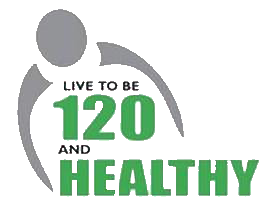I was talking with my sister the other day and she mentioned that her toddler started getting small patches of eczema on her arm.
Now, what kind of auntie would I be if I didn’t whip up a batch of soothing eczema cream for my sweet baby niece?
Aloe Vera: A Natural and Healing Wonder
Eczema is considered an immune deficiency and requires a cure to work both inside and out. Aloe vera is one of the few natural wonders that has been shown to reduce eczema symptoms both on the skin and in the immune system. In fact, according to MedlinePlus, a service of the National Library of Medicine and the National Institutes of Health, notes, “Some chemicals in aloe gel seem to be able to increase circulation in the tiny blood vessels in the skin, as well as kill bacteria. Together, these effects suggest that Aloe gel might be effective in accelerating the wound healing process.” Although it is too early to come to a final conclusion, many reputable studies indicate that aloe does in fact strengthen the immune system, as well as assisting in healing epithelial tissues.
The active polysaccharide fractions in aloe are called galacto-mannans or beta-glucomannans. These polysaccharides have been shown in laboratory studies to act as a bridge between foreign proteins (such as virus particles) and macrophage cells in the human body, facilitating the destruction of the invading the protein by the macrophage.
Activating the receptor sites of the macrophages is also a key to the overall boosting of cell-mediated immunity, which, significantly, is deficient in HIV infection and other immune disorders
Aloe vera can be applied topically to reduce inflammation, swelling, and itching on the skin. I wanted to help soothe my niece’s skin and heal it at the same time. These are the ingredients I used:
Shea butter – This natural butter is a superfood for the skin and instantly helps with dry skin, eczema, and skin problems. As well, the deep moisturizing assists in skin regeneration, and possesses skin healing properties.Jojoba oil – Jojoba oil’s similarity to sebum allows it to absorb easily and readily into your skin, making it a gentle, skin-softening moisturizer for all skin types.Calendula oil – This healing oil has traditionally been used to treat an assortment of ailments including: conjunctivitis, blepharitis, eczema, gastritis, minor burns including sunburns, warts, and minor injuries such as sprains and wounds.Aloe vera – Using Aloe vera for eczema is considered to be an effective and natural way to relieve dry and itchy symptoms and help the skin regenerate.Vitamin E – Vitamin E oil promotes healing and is an active ingredient in many products available for skin and nails.Whipped Eczema Cream
Makes 2 containers
1 lb. pure shea butter5 tbls. jojoba oil5 tbls. calendula oil¼ cup Aloe vera15 drops lavender essential oil5-10 drops tea tree essential oil4 vitamin e capsulesIn a large bowl, add all ingredients and blend together using an electric blender.Using a large spoon, add eczema cream to clean containers. Use as needed to relieve symptoms associated with eczema.To assist in relieving skin irritation, refrigerate cream to keep cool.The end result is a rich cream that absorbs perfectly into the skin. Best of all, it smells wonderful! I will keep you all updated on how well the eczema cream works on my niece. In the meantime, whip this easy recipe up and enjoy the healing benefits of Aloe!
Contributed by Tess Pennington of Ready Nutrition. Tess Pennington is the author of The Prepper’s Blueprint, a comprehensive guide that uses real-life scenarios to help you prepare for any disaster. Because a crisis rarely stops with a triggering event the aftermath can spiral, having the capacity to cripple our normal ways of life. The well-rounded, multi-layered approach outlined in the Blueprint helps you make sense of a wide array of preparedness concepts through easily digestible action items and supply lists.
Tess is also the author of the highly rated Prepper’s Cookbook, which helps you to create a plan for stocking, organizing and maintaining a proper emergency food supply and includes over 300 recipes for nutritious, delicious, life-saving meals.





